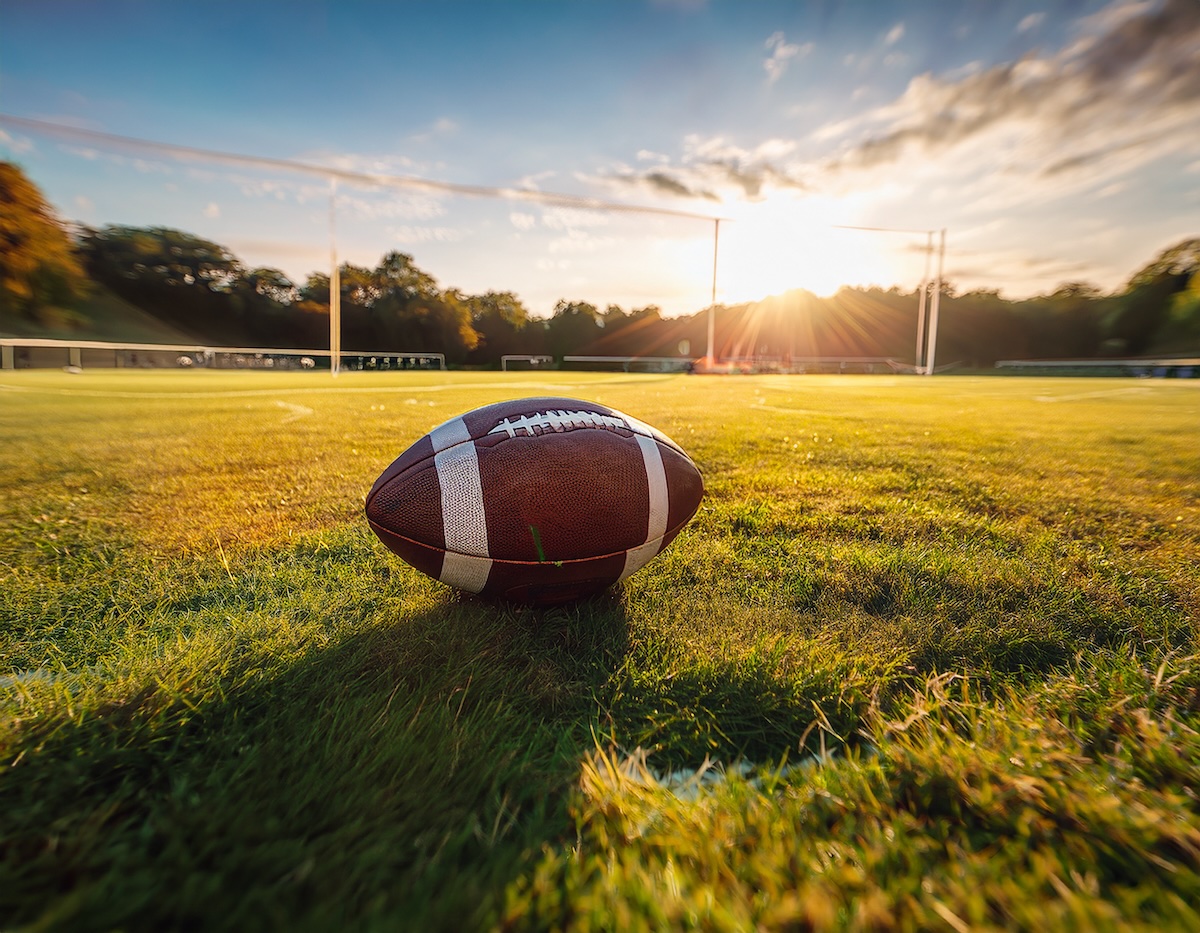Last Updated on May 8, 2025 by UDC Sports
Building a reliable football field starts with what’s under your feet. The soil profile controls how well a natural turf field drains, withstands play, and recovers after use. While modern fields often use artificial turf, natural grass fields remain common in schools, parks, and smaller stadiums. The right soil choice ensures those surfaces stay playable and safe throughout the season.
Key Qualities of Ideal Football Field Soil
For natural grass fields, the ideal soil needs to balance three major factors: drainage, compaction resistance, and nutrient retention. These qualities work together to support strong root development and surface stability.
1. Drainage
The soil must drain excess water quickly after rain. Poor drainage causes standing water, slippery conditions, and root rot. Fields built on heavy clay often struggle with waterlogged conditions. Sandy soils offer much better drainage, but they can be too loose on their own.
2. Resistance to Compaction
Fields get trampled constantly. A soil that compacts too easily will lose air space, suffocate roots, and turn into hardpan. Clay is prone to this, while sand is better. However, sand alone lacks stability and can shift too much under cleats.
3. Nutrient and Water Holding
A balance is needed. While sand drains well, it doesn’t hold nutrients or moisture as effectively. Adding organic material helps provide a more supportive medium for plant growth.
Best Soil Type for Grass Football Fields
Most natural turf football fields use a sand-based rootzone. This setup typically includes:
-
85 to 90 percent medium to coarse sand
-
5 to 15 percent silt and clay
-
3 to 5 percent organic matter
This mix drains quickly, resists compaction, and, when properly maintained, promotes durable turf.
Some fields use native soil, which is usually a local loam or clay loam. These are cheaper but don’t drain as well, especially under heavy use. Native soil fields require subsurface drainage systems and more maintenance to stay functional after rain.
In elite-level builds, USGA-style sand-based systems are used, similar to what you see on golf course greens. These use a precisely graded sand blend, gravel layers, and drain tile underneath to move water away from the root zone.
Subsurface Construction Matters Too
Even the right soil needs support beneath it. Football field construction usually follows a layered approach:
-
Top layer: sand-organic blend (6-12 inches)
-
Rootzone separator or geotextile
-
Gravel drainage layer (4-6 inches)
-
Drainage tile at 15 to 20 foot spacing
-
Subgrade (compacted base layer)
This engineered layering ensures the field stays playable after rain and holds its shape under pressure.
Maintenance and Soil Amendments
The best soil still needs upkeep. Common amendments include:
-
Topdressing sand to manage thatch and smooth the surface
-
Aeration to relieve compaction and increase root oxygen
-
Compost or peat moss to raise organic matter levels
-
Gypsum to loosen compacted clay fields and improve structure
Fertilizer and pH management are also critical to keep the grass growing strong. A soil test should be done before each season to guide nutrient planning.
Artificial Turf Considerations
Not every field is natural. Artificial turf has become popular for its low maintenance and year-round playability. It eliminates the need for irrigation, mowing, and re-sodding. However, it also brings new construction concerns.
Artificial turf fields are built on a stable base, usually compacted aggregate, with drain tile beneath. Instead of growing roots, they use infill like crumb rubber, sand, or a mix of both to give the surface cushion and stability.
While artificial turf solves problems with maintenance and weather sensitivity, it brings trade-offs. Heat retention, surface abrasiveness, and injury risk are all concerns that need to be weighed when comparing natural turf to synthetic options.
When to Choose Artificial Turf Instead
Artificial turf is often chosen when:
-
The field is used heavily year-round with little rest time
-
Maintenance budgets or water access are limited
-
The site has poor drainage or unsuitable native soils
-
The facility hosts multiple sports or events and needs a uniform surface
Even with its benefits, installing artificial turf is not a simple substitute. It requires precise leveling, advanced drainage design, and regular grooming to prevent surface compaction and fiber wear.
Soil Selection is a Long-Term Decision
Once a field is built, the underlying soil is difficult to change. That’s why upfront planning is crucial. If you cut costs or settle for poor soil, you will face more expenses later through drainage repairs, regrading, or even full reconstruction.
When building a new football field with natural turf, prioritize:
-
A high-sand rootzone with some organic matter
-
A properly designed subsurface drainage system
-
Regular aeration and topdressing
-
Monitoring of nutrient levels and pH
These elements will keep the field playable, safe, and sustainable for years.
Building it Right from the Ground Up
Soil is the foundation of every great grass field. Cutting corners on what’s underneath guarantees problems on top. And if synthetic turf is the better fit for your needs, make sure the construction follows strict performance and safety standards.
If you’re planning a new build or thinking about an upgrade, we can help. At UDC Sports Construction, we build natural and artificial football fields that hold up to heavy use and deliver consistent play across the entire surface. From sports complex development to full drainage systems and turf installation, we handle every detail. Get in touch with us to start your project right. Build it from the ground up for the game.




